CSotD: Picture Imperfect
Skip to comments
Let’s start with some technical history, to explain today’s Mother Goose & Grimm (AMS) for readers under 50:
Half a century ago, O Best Beloved, cell phones were the size of a shoe and quite expensive. Most people couldn’t afford them, but at some point, they began putting phones in commercial airplanes, which was quite a novelty and the first time many people had the chance to use a telephone that wasn’t hardwired to a telephone pole.
So people would pay the three or four bucks to make a call, even though they had no reason to call except to say, “Hey! Guess where I’m calling from? The airplane!”
It was quite exciting at the time.
I think the joke here is that Hell will have cell towers and Heaven will not. At least that’s my belief. But if Dante’s vision of Hell is correct, only the top three levels of Hell will have cell service.
Any lower and you’ll be dependent on Comcast.
Toucan Play That Game!
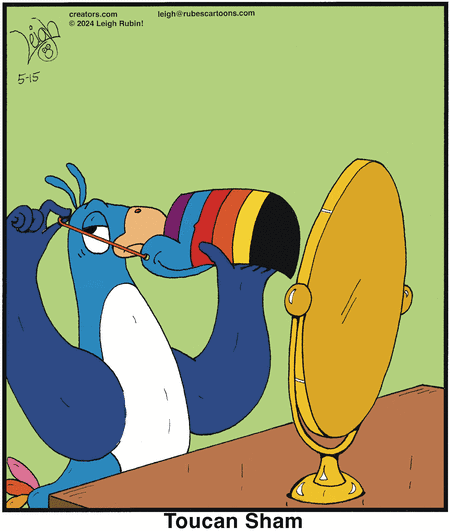
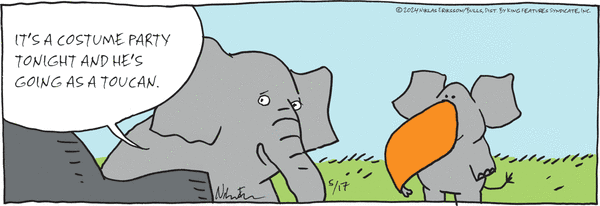
It’s been a good week for make-believe toucans. And, again for readers not of retirement age, a small dose of history: Froot Loops were introduced in 1963 with their mascot/salesbird Toucan Sam as part of a good, nutritious breakfast.
The part you can throw out and it will still be a good, nutritious breakfast, because Froot Loops were one of the first breakfast candies, though Cocoa Puffs and Trix are about a decade older. But before that, parents only worried that Frosted Flakes were more of a treat than a for-real food.

Jeremy’s Mom in Zits (KFS) probably grew up eating candy for breakfast, too, and so they both know what a toucan is, though that won’t likely be on his physics test.
Either/ Eeyore
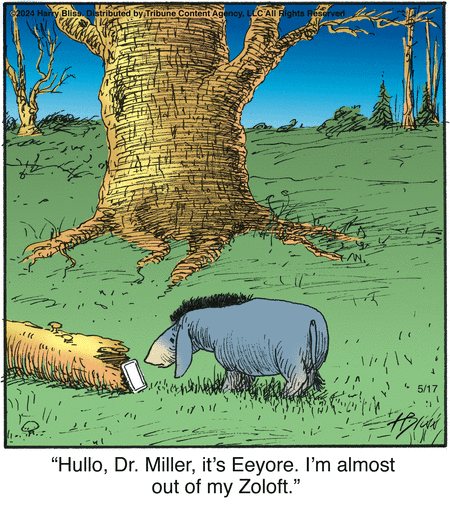
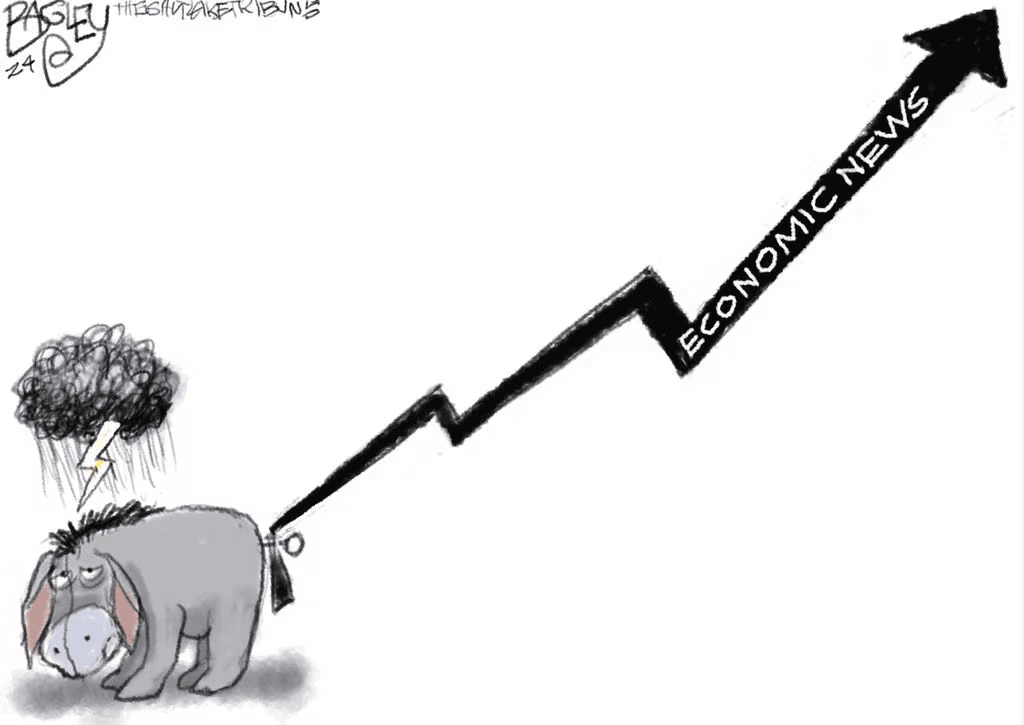
More history, because, while Pat Bagley uses the Disney Eeyore to point out that the economy is doing rather well but the compulsively pessimistic are refusing to notice, Harry Bliss uses the classic E.H. Shepard Eeyore in a gag about clinical depression.

To which I would add that Bliss once again uses a reasonable version of the E.H. Shepard tree, which confirms his standing as a classicist and a good person and a good excuse for me to repeat one of my very favorite Lio (AMS) cartoons.
And wotthehell, I’ll even link to a prodigious rant on the topic of storybook sellouts that I wrote back in 1998, when my granddaughter was younger than her daughter is today.
You’re welcome.
Warts and all
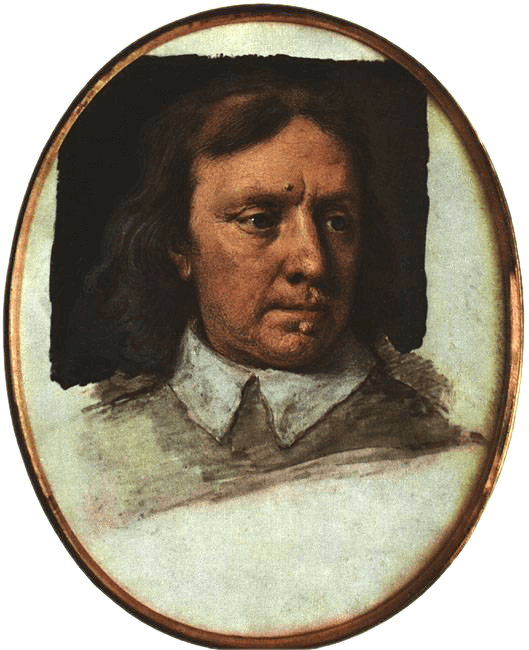
Mr. Lely, I desire you would use all your skill to paint my picture truly like me, and not flatter me at all; but remark all these roughnesses, pimples, warts, and everything as you see me, otherwise I will never pay a farthing for it. — Oliver Cromwell
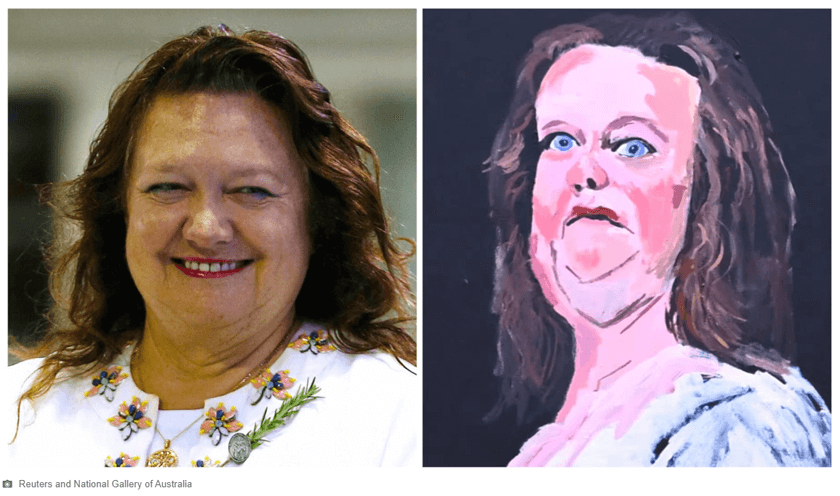
It pains me to have to tell Gina Rinehart, Australia’s wealthiest despoiler of the environment woman, “You’re no Oliver Cromwell.”
But apparently she isn’t.
A flurry of cartoons from Australian cartoonists sent me to the Googles to find out what in the wide wide world of sports was going on down there.
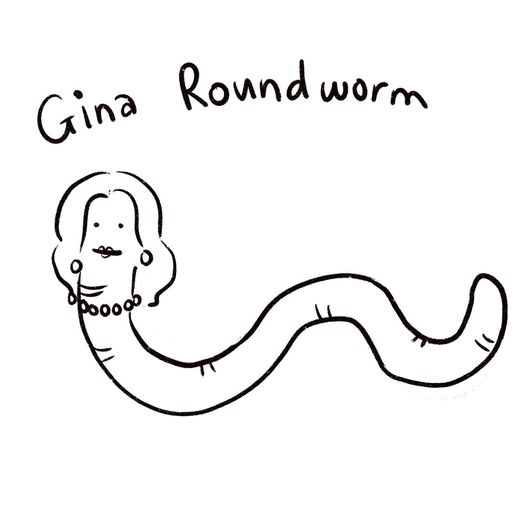
Jess Harwood‘s take was plenty insulting but didn’t explain things. However, the laughter and praise indicated that she was on to something. It doesn’t take many such responses to arouse my curiosity.
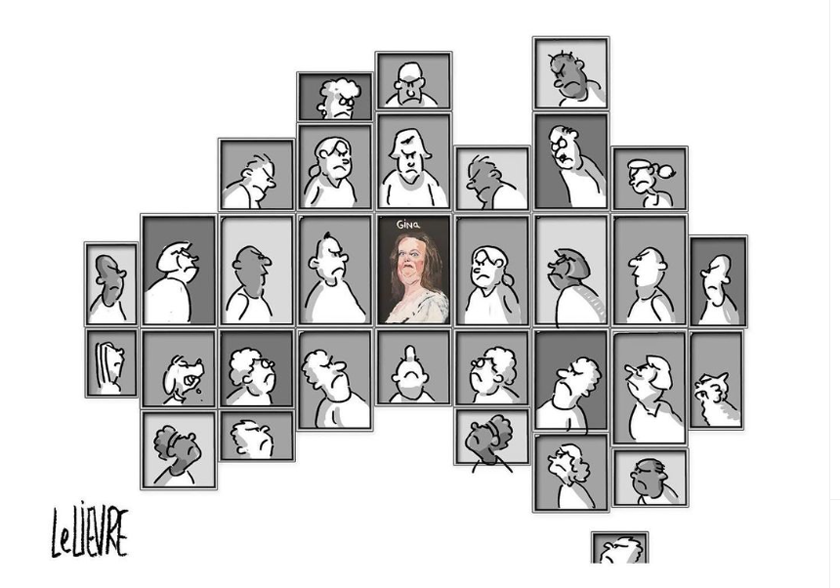
Turns out, as Glen LeLievre graphically explains, Australia’s National Gallery commissioned a prominent indigenous artist to paint a portrait of the woman who made her billion at the head of a company dedicated to digging up his native land. What could possibly go wrong?
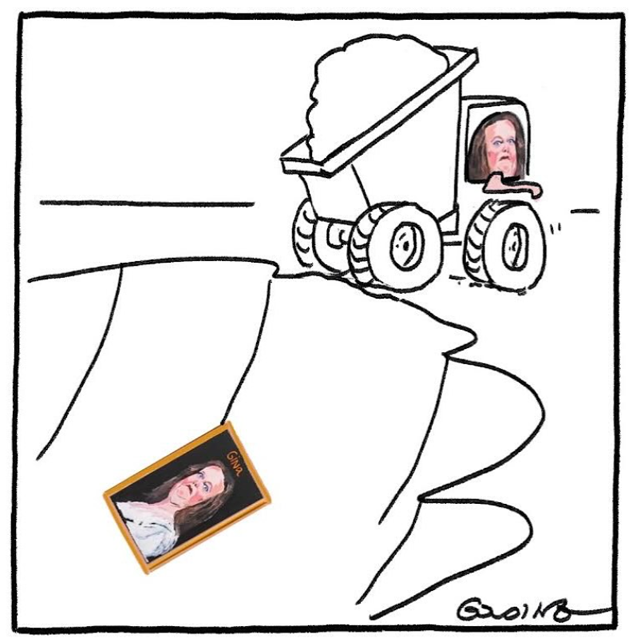
Apparently, according to Matt Golding, mining queens don’t like it being publicly announced that they are, as Frederic the Pirate’s Apprentice feared to discover of his dear Ruth, “on the whole rather plain,” and she requested that the portrait be removed, if not specifically deeply buried somewhere in the Outback.
Not only did Ms. Rinehart feel that way, but so did the members of Australia’s National Swim Team, who, by some astonishing coincidence, get a much larger donation from Rinehart’s company than does the National Gallery.
As is so often the case with Australian news, First Dog on the Moon explains the dustup in detail:
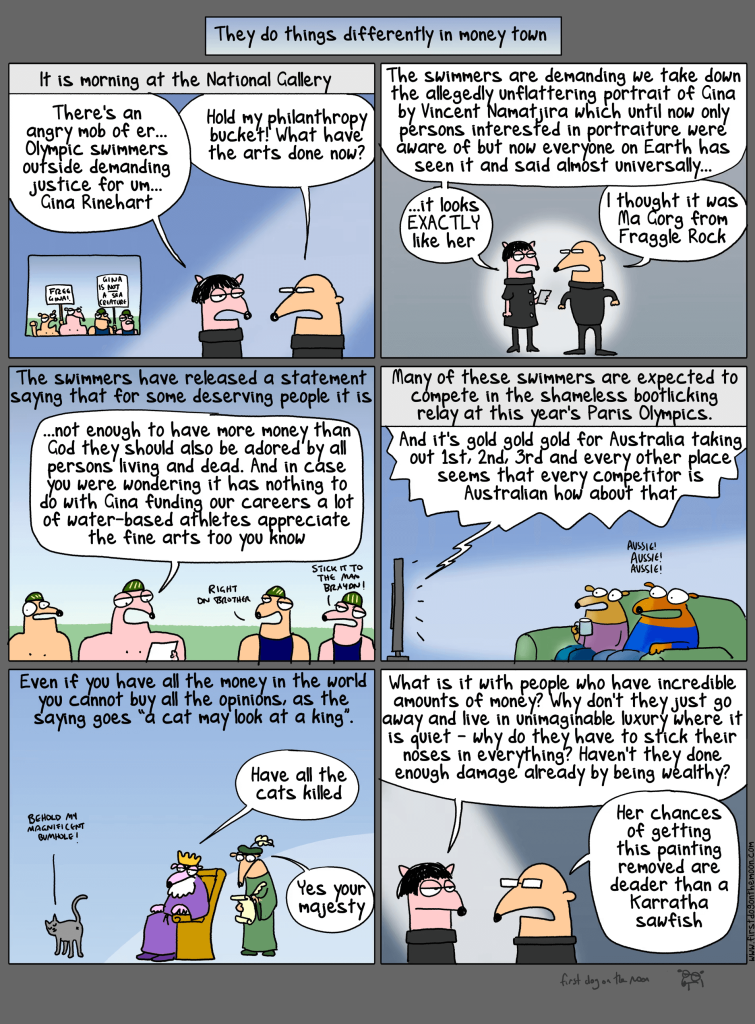
Meanwhile, back in the Motherland
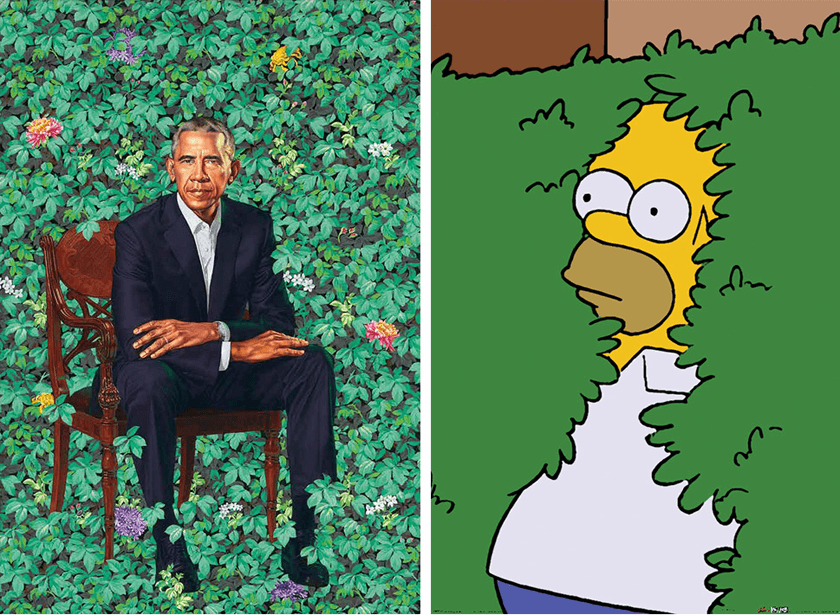
I think all students of the fine arts recognize that it takes a great deal of creativity, vision and skill to craft a fine portrait, but that the peasants don’t appreciate the more refined things in life. And in art. And suchlike.
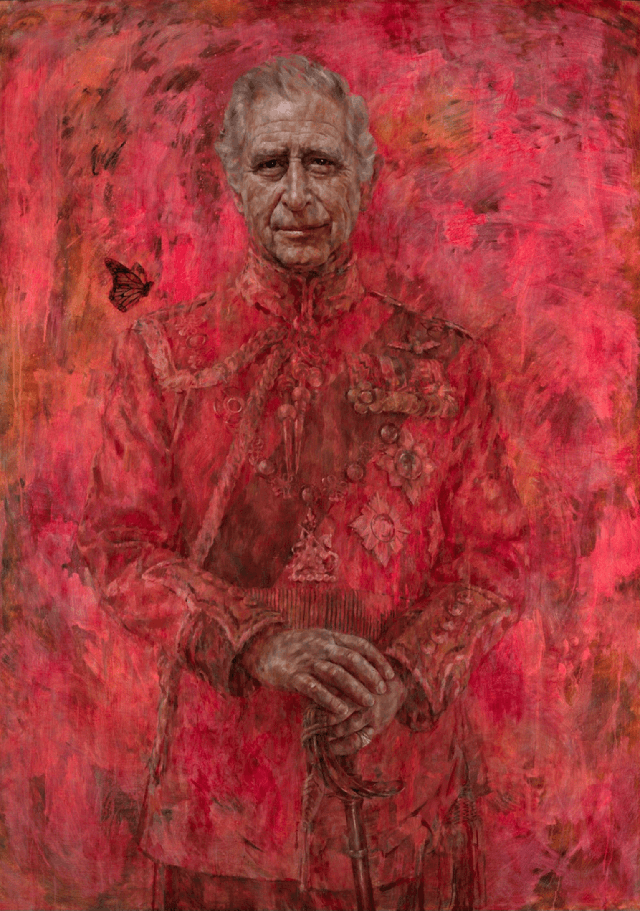
So Jonathan Yeo’s portrait of King Cholly also sparked an explosion of cartoons from people who really ought to know better, especially Americans who — despite having been taught from their very youngest years to think of the British as redcoats and lobsterbacks — failed to see the symbolism of whatever the hell the artist had in mind.
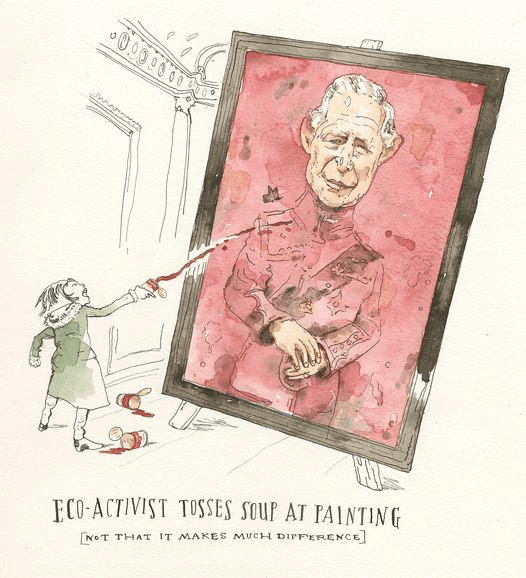
Barry Blitt opined that the portrait would be difficult for anti-petroleum demonstrators to damage, but admitted that as he finished his work, he discovered someone had beaten him to the gag.
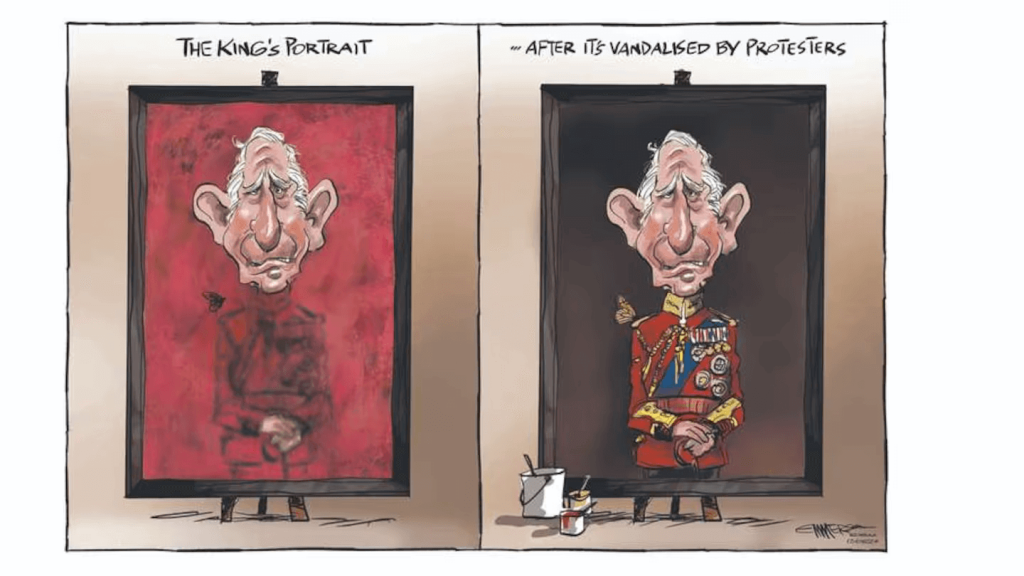
Though if he had Rod Emmerson in mind, I’d note the important difference is that Emmerson suggests vandalism might improve the work.
I’d note that Emmerson also captured His Majesty’s jug ears, which brings us back to Cromwell’s artistic instructions. Not that I don’t already think of Oliver Cromwell whenever I hear someone say “King Charles.”
Here’s the thing: Yeo’s portrait is a lovely, very artistic painting, but it’s a damn lousy portrait.
I love Chagall and I appreciate Picasso, but I wouldn’t want to try to pick their models out of a lineup based on how they were painted. A portrait, as opposed to a portrayal, should at least give you a fighting chance.
By contrast, I’ll bet I could pick out Gina Rinehart in a crowd, armed only with Vincent Namatjira’s portrait.
More’s the pity for her.
Portrait of the Artist as a Mad Man

Those who prefer handsome men (but for Alfred E. Newman would make an exception) should begin planning a trip to the Berkshires this summer when the Norman Rockwell Museum will host a major exhibition of work from Mad Magazine (h/t to Guy Badeaux).
The exhibit runs through October 27, so you could go just before Columbus Day and catch some autumn color, too.
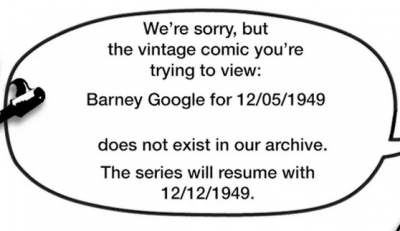
Comments 12
Comments are closed.